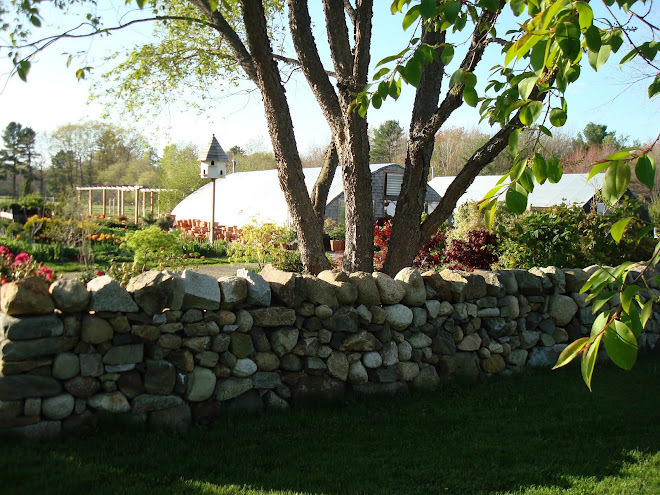I was lucky enough to be invited to post on the Tom's of Maine blog recently, and i wanted to share with you what i submitted. As you know Tom's prides itself on being a environmentally conscious company, and, since it was founded in Maine, is somewhat of a standard for small businesses like Blackrock. It was an honor to guest post on their blog.
They asked me to write a post on spring startup of our vegetable gardens, and with help from the staff here, I produced the following little advice column. Naturally, there's much more to talk about, but questions and comments are what this blog is all about, so feel free to contact Blackrock for more answers and discussion.
Here it is:
Vegetable Preparations at Blackrock Farm
The skating rink that was once the driveway to the greenhouses at
Blackrock Farm has largely melted away, we’ve set the clocks forward
and we are beginning to prepare for spring in earnest. Every time I
walk into the office Kevin (our vegetable guy) and Helene (the owner)
are discussing types of radishes, planning space usage of the fields,
discussing crop rotations or hammering out any other of the myriad of
things that need to be figured before the frost leaves the ground.
With the advent of the third greenhouse being used for winter
vegetable growing there are calls to restaurants to be made, community
supported agriculture programs to discuss and, in our freer moments,
summer barbeque menus to plan.
However, all these grand plans must start small and, in a way, we
start the garden anew every year. While our experience grows with
each passing season there are aspects of the vegetable garden that we
must restart each year with the coming of spring, just like any
gardener starting a plot at home.
The first and perhaps most important step is the contacting of our
local cooperative extension for soil testing. After submitting a soil
sample and a short wait these scientists tell us everything we need to
know about the makeup of our soil, which give us a better
understanding of what soil amendments we need to add in order to start
the season with a strong foundation. Blackrock recommends that anyone
starting a vegetable garden submit their soil to be tested and remain
mindful of an organic approach to amending the space, as well as a
change in approach, if necessary, to pest management that excludes
chemicals.
The garden is then thoughtfully plotted, allowing for the rotation of
crops, which means somewhat new plan must be created each year.
Changing the location of your plants, even within a small garden plot,
is necessary because different plants supply and deplete different
nutrients, and attract different opportunistic insects. Rotating your
crops means keeping harmful bugs off balance and allowing the soil in
your garden to perform different tasks. For instance, the planting of
peas fixes nitrogen levels in soil; meanwhile, tomatoes are very heavy
feeders, so flip flopping the spaces you use for peas and tomatoes is
one of our most important rotations.
We select our seeds from reputable dealers like Johnny’s or Fedco, and
even now we have to read the packets to ensure a timely harvest. It
takes a lot of planning, but the results are well worth it. There is
a peace of mind that comes with knowing the vegetables you are eating
come to your table without pesticides, and I know I have gained a
healthy respect for just how much food can come from a small piece of
land with just a little bit of attention. But most of all, the
vegetables are far more delicious than any you can buy at the
supermarket, and because you just picked them, as fresh as can be.
For more answers to any questions you might have I would highly
recommend visiting a location near you that produces vegetables
organically and on a small scale. For instance, Blackrock Farm here
in Kennebunkport, Maine will be conducting several vegetable growing
seminars this year in an attempt to reach out to the local community
through shared learning.


No comments:
Post a Comment